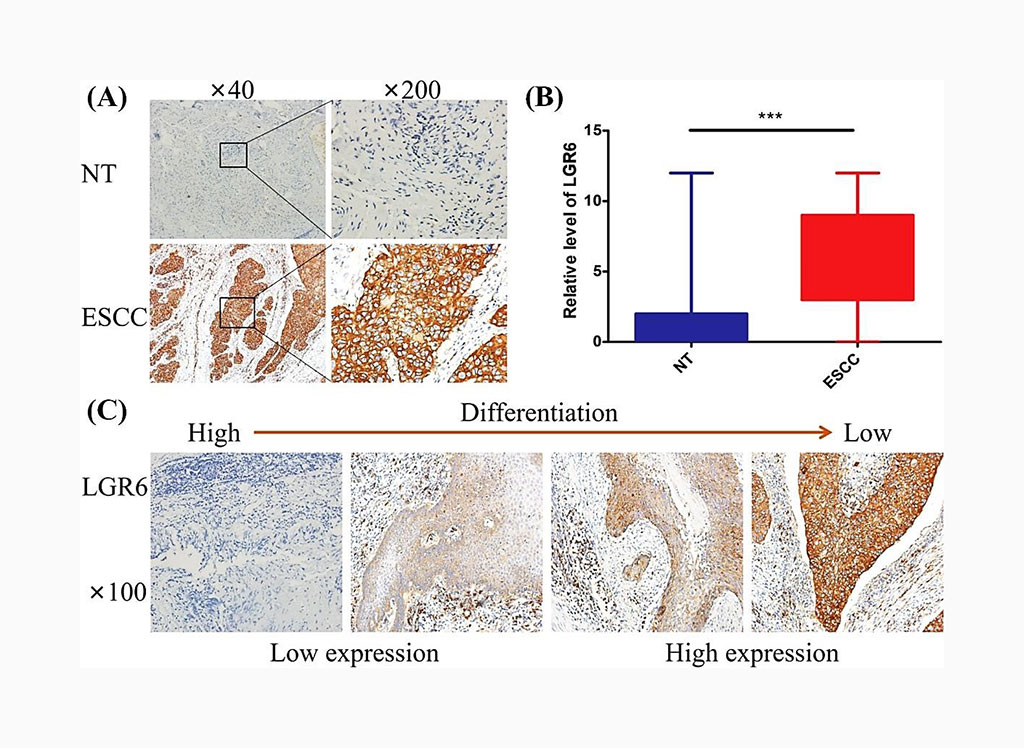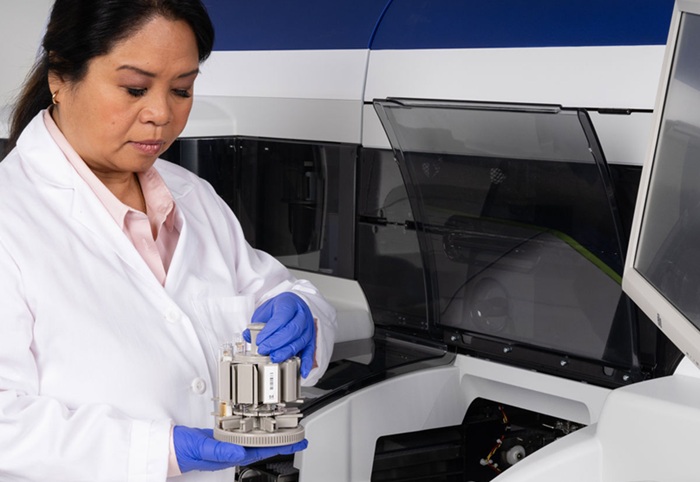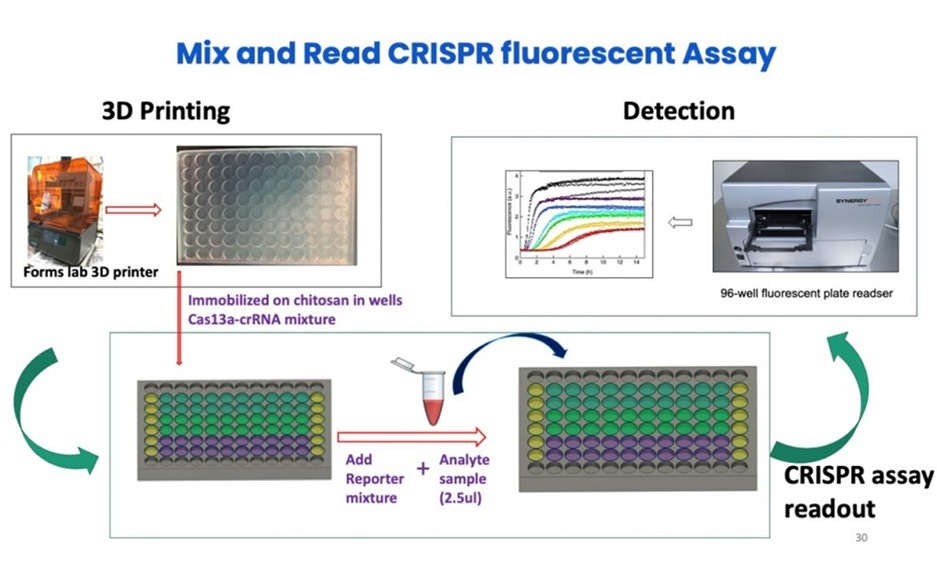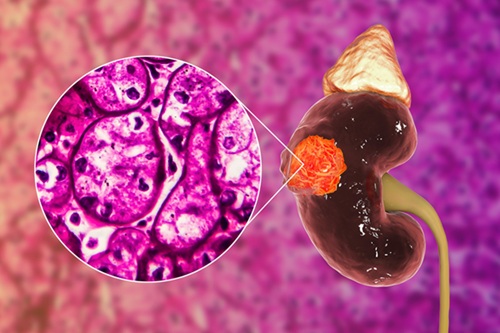Diagnostic Biomarker Found for Esophageal Squamous Cell Carcinoma
|
By LabMedica International staff writers Posted on 22 Jan 2020 |

Image: Histological immunostaining showing expression of leucine‐rich repeat‐containing G protein–coupled receptor 6 (LGR6) in esophageal squamous cell carcinoma (ESCC) and normal esophageal tissues (NT) (Photo courtesy of Fujian Medical University).
Esophageal cancer is one of the most common malignant tumors in the world, and its incidence ranks seventh among those of all malignant tumors. Esophageal cancer can be divided into two pathological types: squamous cell carcinoma (SCC) and adenocarcinoma.
Leucine‐rich repeat‐containing G protein–coupled receptor (LGR) plays a pivotal role in adult stem cells, which are markers of various types of adult stem cells in the skin, nails, and a group of basal and intraluminal progenitors that induce luminal tumorigenesis. LGR6 can promote the self‐renewal and progression of non–small‐cell lung cancer and has strong carcinogenic potential.
Scientists at the Fujian Medical University Union Hospital (Fuzhou, China) collected during surgical resection of esophageal cancer, 102 Esophageal Squamous Cell Carcinoma (ESCC) samples and their corresponding non‐tumor esophageal tissues. Tissues were immediately frozen in liquid nitrogen and stored in a −80 °C freezer or fixed in 10% formalin for paraffin embedding.
Total RNA was extracted from frozen tissue and 1 mg of RNA was reverse transcribed for first complementary DNA strand synthesis using a miScript Reverse Transcription Kit (Qiagen, Hilden Germany). Real‐time quantitative polymerase chain reaction (PCR) was performed using a SYBR Premix EX Taq Kit (TakaraBio, Shiga, Japan). The relative mRNA expression of LGR6 was detected with the 2(-Delta Delta C(T)) method using specific primers and its expression level was normalized to that of endogenous β‐actin. Other techniques used by the investigators included Western Blots Analysis and immunohistochemistry (IHC).
The scientists reported that the expression of LGR6 in ESCC tissues was significantly higher than that in normal tissues and was negatively correlated with the differentiation degree of ESCC and the prognosis of the patients but not closely correlated with the Classification of Malignant Tumors (TNM) stage of ESCC. Protein‐protein interaction (PPI) networks showed that LGR6 had a close interaction with R-spondin-1 (RSPO1), RSPO2, RSPO3, and RSPO4. Kyoto encyclopedia of genes and genomes (KEGG) pathway analysis showed that LGR6 activated the Wnt/β‐catenin signaling pathway by binding with RSPO ligands to promote the progression of ESCC.
The authors concluded that the study confirmed for the first time that LGR6 is highly expressed in ESCC tissues and that increased expression of LGR6 is associated with a poor prognosis of ESCC patients. These findings provide a basis for the potential application of LGR6 as a biomarker for early diagnosis and as a target gene for early therapeutic intervention. The study was published on January 9, 2020 in the Journal of Clinical Laboratory Analysis.
Related Links:
Fujian Medical University Union Hospital
Qiagen
TakaraBio
Leucine‐rich repeat‐containing G protein–coupled receptor (LGR) plays a pivotal role in adult stem cells, which are markers of various types of adult stem cells in the skin, nails, and a group of basal and intraluminal progenitors that induce luminal tumorigenesis. LGR6 can promote the self‐renewal and progression of non–small‐cell lung cancer and has strong carcinogenic potential.
Scientists at the Fujian Medical University Union Hospital (Fuzhou, China) collected during surgical resection of esophageal cancer, 102 Esophageal Squamous Cell Carcinoma (ESCC) samples and their corresponding non‐tumor esophageal tissues. Tissues were immediately frozen in liquid nitrogen and stored in a −80 °C freezer or fixed in 10% formalin for paraffin embedding.
Total RNA was extracted from frozen tissue and 1 mg of RNA was reverse transcribed for first complementary DNA strand synthesis using a miScript Reverse Transcription Kit (Qiagen, Hilden Germany). Real‐time quantitative polymerase chain reaction (PCR) was performed using a SYBR Premix EX Taq Kit (TakaraBio, Shiga, Japan). The relative mRNA expression of LGR6 was detected with the 2(-Delta Delta C(T)) method using specific primers and its expression level was normalized to that of endogenous β‐actin. Other techniques used by the investigators included Western Blots Analysis and immunohistochemistry (IHC).
The scientists reported that the expression of LGR6 in ESCC tissues was significantly higher than that in normal tissues and was negatively correlated with the differentiation degree of ESCC and the prognosis of the patients but not closely correlated with the Classification of Malignant Tumors (TNM) stage of ESCC. Protein‐protein interaction (PPI) networks showed that LGR6 had a close interaction with R-spondin-1 (RSPO1), RSPO2, RSPO3, and RSPO4. Kyoto encyclopedia of genes and genomes (KEGG) pathway analysis showed that LGR6 activated the Wnt/β‐catenin signaling pathway by binding with RSPO ligands to promote the progression of ESCC.
The authors concluded that the study confirmed for the first time that LGR6 is highly expressed in ESCC tissues and that increased expression of LGR6 is associated with a poor prognosis of ESCC patients. These findings provide a basis for the potential application of LGR6 as a biomarker for early diagnosis and as a target gene for early therapeutic intervention. The study was published on January 9, 2020 in the Journal of Clinical Laboratory Analysis.
Related Links:
Fujian Medical University Union Hospital
Qiagen
TakaraBio
Latest Pathology News
- 3D Genome Mapping Tool to Improve Diagnosis and Treatment of Genetic Diseases
- New Molecular Analysis Tool to Improve Disease Diagnosis
- Tears Offer Noninvasive Alternative for Diagnosing Neurodegenerative Diseases
- AI-Powered Method Combines Blood Data to Accurately Measure Biological Age
- AI Tool Detects Cancer in Blood Samples In 10 Minutes
- AI Pathology Analysis System Delivers Comprehensive Cancer Diagnosis
- AI Improves Cervical Cancer Screening in Low-Resource Settings
- New Multi-Omics Tool Illuminates Cancer Progression
- New Technique Detects Genetic Mutations in Brain Tumors During Surgery within 25 Minutes
- New Imaging Tech to Improve Diagnosis and Treatment of Skin Cancers
- Serially Testing Brain Tumor Samples Reveals Treatment Response in Glioblastoma Patients
- High-Accuracy Tumor Detection Method Offers Real-Time Surgical Guidance
- AI Tool Detects Hidden Warning Signs of Disease Inside Single Cells
- Automated Tool Detects Early Warning Signs of Breast Cancer
- New Software Tool Improves Analysis of Complex Spatial Data from Tissues
- AI Tool Helps Surgeons Distinguish Aggressive Glioblastoma from Other Brain Cancers in Real-Time
Channels
Clinical Chemistry
view channel
VOCs Show Promise for Early Multi-Cancer Detection
Early cancer detection is critical to improving survival rates, but most current screening methods focus on individual cancer types and often involve invasive procedures. This makes it difficult to identify... Read more
Portable Raman Spectroscopy Offers Cost-Effective Kidney Disease Diagnosis at POC
Kidney disease is typically diagnosed through blood or urine tests, often when patients present with symptoms such as blood in urine, shortness of breath, or weight loss. While these tests are common,... Read moreMolecular Diagnostics
view channel
Automated Test Distinguishes Dengue from Acute Fever-Causing Illnesses In 18 Minutes
Dengue fever remains the most common mosquito-borne viral infection worldwide, posing a major public health challenge as global cases continue to surge. In 2024 alone, more than 14.6 million infections... Read more
High-Sensitivity Troponin I Assay Aids in Diagnosis of Myocardial Infarction
Heart disease remains the leading cause of death for adults over 45 in the United States, accounting for nearly one in three deaths. In 2023 alone, 919,032 Americans died from cardiovascular disease —... Read more
Fast Low-Cost Alzheimer’s Tests Could Detect Disease in Early and Silent Stages
Early diagnosis remains one of the greatest challenges in combating Alzheimer’s disease, the most common cause of age-related dementia. With symptoms like memory loss and confusion typically appearing... Read more
Further Investigation of FISH-Negative Tests for Renal Cell Carcinoma Improves Diagnostic Accuracy
Accurate diagnosis of renal cell carcinoma (RCC) is critical to determining the right therapy, but standard diagnostic methods can sometimes miss important genetic alterations. Now, researchers have discovered... Read moreHematology
view channel
ADLM’s New Coagulation Testing Guidance to Improve Care for Patients on Blood Thinners
Direct oral anticoagulants (DOACs) are one of the most common types of blood thinners. Patients take them to prevent a host of complications that could arise from blood clotting, including stroke, deep... Read more
Viscoelastic Testing Could Improve Treatment of Maternal Hemorrhage
Postpartum hemorrhage, severe bleeding after childbirth, remains one of the leading causes of maternal mortality worldwide, yet many of these deaths are preventable. Standard care can be hindered by delays... Read more
Pioneering Model Measures Radiation Exposure in Blood for Precise Cancer Treatments
Scientists have long focused on protecting organs near tumors during radiotherapy, but blood — a vital, circulating tissue — has largely been excluded from dose calculations. Each blood cell passing through... Read moreImmunology
view channel
Chip Captures Cancer Cells from Blood to Help Select Right Breast Cancer Treatment
Ductal carcinoma in situ (DCIS) accounts for about a quarter of all breast cancer cases and generally carries a good prognosis. This non-invasive form of the disease may or may not become life-threatening.... Read more
Blood-Based Liquid Biopsy Model Analyzes Immunotherapy Effectiveness
Immunotherapy has revolutionized cancer care by harnessing the immune system to fight tumors, yet predicting who will benefit remains a major challenge. Many patients undergo costly and taxing treatment... Read moreMicrobiology
view channel
High-Throughput Enteric Panels Detect Multiple GI Bacterial Infections from Single Stool Swab Sample
Gastrointestinal (GI) infections are among the most common causes of illness worldwide, leading to over 1.7 million deaths annually and placing a heavy burden on healthcare systems. Conventional diagnostic... Read more
Fast Noninvasive Bedside Test Uses Sugar Fingerprint to Detect Fungal Infections
Candida bloodstream infections are a growing global health threat, causing an estimated 6 million cases and 3.8 million deaths annually. Hospitals are particularly vulnerable, as weakened patients after... Read moreTechnology
view channel
Portable Biosensor Diagnoses Psychiatric Disorders Using Saliva Samples
Early diagnosis of psychiatric disorders such as depression, schizophrenia, and bipolar disorder remains one of medicine’s most pressing challenges. Current diagnostic methods rely heavily on clinical... Read more
Cell-Sorting Device Uses Electromagnetic Levitation to Precisely Direct Cell Movement
Sorting different cell types—such as cancerous versus healthy or live versus dead cells—is a critical task in biology and medicine. However, conventional methods often require labeling, chemical exposure,... Read moreIndustry
view channel
Co-Diagnostics Forms New Business Unit to Develop AI-Powered Diagnostics
Co-Diagnostics, Inc. (Salt Lake City, UT, USA) has formed a new artificial intelligence (AI) business unit to integrate the company's existing and planned AI applications into its Co-Dx Primer Ai platform.... Read more







 assay.jpg)














